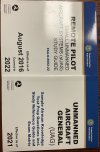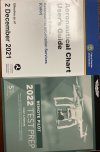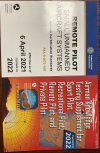First I would like to thank everyone on MavicPilots for your knowledge. I am teaching myself about and how to fly my Mavic 3. Had I not found this site, I would have sold the drone a month after getting it.
Now to the questions:
1) I am toying with the idea of getting my 107 even though I have no intention of doing any commercial work. I am assuming it will make me better and safer. Thoughts?
2) I have started studying the Owners Manual. Something I did not do before flying...very bad, I know. Are there sections I go through first? I have highlighted and marked the RTH section. Figured that is a real important one.
3) I fly from my property. We are surrounded by trees so I am getting a ton of practice landing in a narrow column of space but not much else. Can you recommend exercises/patterns, etc. that I can practice flying low?
4) Lastly, I start a return to home point at 50% battery no matter how far I am. I fly on calm days. Not ready for even a little breeze if I can help it. Am I being too conservative? I have to think about how I am coming back so it takes me longer that experienced pilots. Opinions? Suggestions?
I wish I had an experienced remote pilot to fly with but I have y'all! Again, thank you so much for getting me this far.
Now to the questions:
1) I am toying with the idea of getting my 107 even though I have no intention of doing any commercial work. I am assuming it will make me better and safer. Thoughts?
2) I have started studying the Owners Manual. Something I did not do before flying...very bad, I know. Are there sections I go through first? I have highlighted and marked the RTH section. Figured that is a real important one.
3) I fly from my property. We are surrounded by trees so I am getting a ton of practice landing in a narrow column of space but not much else. Can you recommend exercises/patterns, etc. that I can practice flying low?
4) Lastly, I start a return to home point at 50% battery no matter how far I am. I fly on calm days. Not ready for even a little breeze if I can help it. Am I being too conservative? I have to think about how I am coming back so it takes me longer that experienced pilots. Opinions? Suggestions?
I wish I had an experienced remote pilot to fly with but I have y'all! Again, thank you so much for getting me this far.














